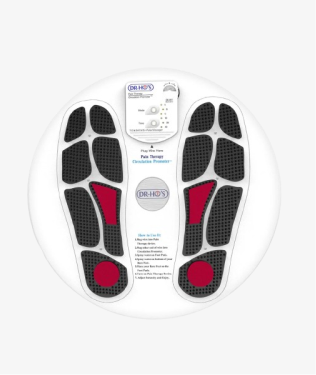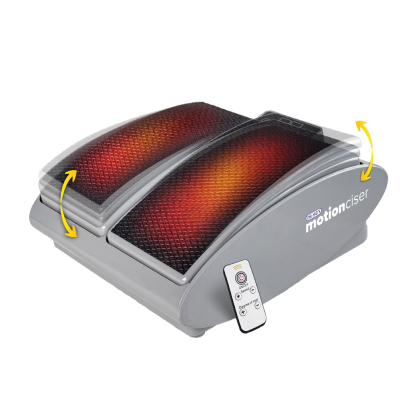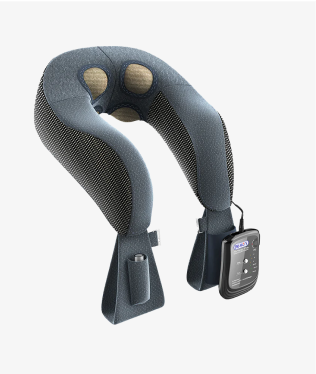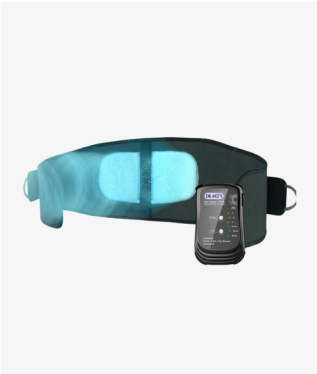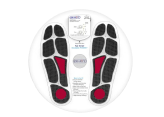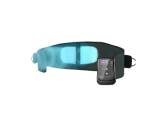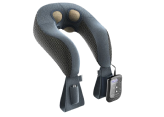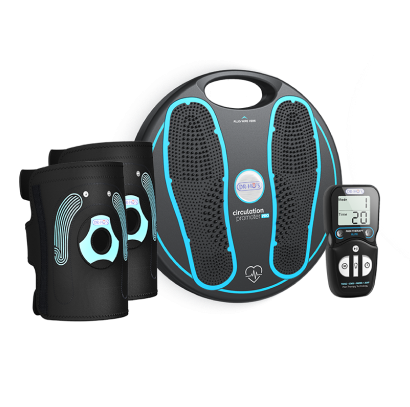The neck has the incredibly important job of protecting the upper part of the spinal column. This part of the spine is called the cervical spine and it both supports the head and allows for a wide range of motion. The shoulder is a ball and socket joint (also called a socket joint), which allows for a large range of movement but also makes it more susceptible to injury and pain. Cervical discs lie between the bones in the neck, working to absorb shock and keep the spine safe from injury. Many more tissues are also important in neck function, including muscles, joints, nerves, the shoulder blade, and upper arm. These anatomical structures are key in neck and shoulder movement and can be involved in pain. And, like many parts of the body, these tissues are susceptible to strain, injury, degeneration and ultimately, chronic/acute pain. These conditions can cause pain in the neck, shoulder, shoulder blade, and upper arm regions.
If you’re one of many seeking to understand neck and shoulder pain and how to relieve it , you’ve come to the right place. Keep reading to learn more about the causes and symptoms of neck and shoulder pain, and to discover tips and tricks for both managing and relieving it.
The Most Common Cause of Neck and Shoulder Pain
One of the most common causes of neck and shoulder pain is muscle strain. This happens when a muscle in the neck is stretched too far and/or too suddenly, or as a result of a sudden injury, which is a frequent cause of acute neck and shoulder pain. When the neck is misaligned from the spine (too forward or too far back), the muscle becomes strained from carrying the weight of the head. Strain is often caused by poor posture, awkward sleeping positions, sudden injury, and other instances of overuse that abnormally stretch the neck, and can result in various pains, including sharp, dull, or radiating discomfort.
Other Causes of Neck and Shoulder Pain
In addition to muscle strain, some other common causes of neck and shoulder pain include:
-
Degenerative disc disease or arthritis
-
Injuries and infections
-
Herniated disk (when the soft inner material protrudes and compresses nerves, causing pain in the neck, shoulder, and arm)
-
Pinched nerve (also known as cervical radiculopathy, which occurs when a compressed nerve in the cervical spine leads to shoulder and neck pain, numbness, or weakness)
-
Bone spurs
-
Bursitis or tendonitis in the shoulder
Conditions like cervical radiculopathy and compressed nerve can cause significant shoulder and neck pain, often requiring medical attention.

Common Neck and Shoulder Pain Symptoms
Neck and shoulder pain is generally easy to detect as it’s usually not something that can be ignored.
Oftentimes, neck pain is situated in the small muscles that run down the sides and back of the neck that meet the shoulders and upper back. However, neck pain can be felt anywhere; neck pain can even radiate to the shoulders, head and face. Some people may also feel pain in their shoulder blades or upper back as a result of neck issues. Some of the most common symptoms experienced by pain sufferers are:
-
A dull ache - A limited range of motion in the neck - Sharp or shooting pain - A numbness that extends down the arms - Swelling of the lymph nodes - Tension headaches
Age-related wear-and-tear and other health & lifestyle factors can make one more likely to experience neck pain. Fortunately, most neck pain is not a serious cause for concern, and it can usually be managed effectively from home with some small modifications and/or additions to your daily routines. See your preferred healthcare professional for diagnosis, and let them know whenever you are starting a new method of pain relief. Be sure to share your medical history and describe your symptoms in detail, as this information can help identify the cause of your pain.
Continue reading to learn about how you can incorporate some of these neck and shoulder pain relief methods for effective, at-home management!

Managing Chronic Neck and Shoulder Pain
Living with chronic neck and shoulder pain can be challenging, often interfering with daily activities and overall quality of life. Understanding the root causes—such as poor posture, pinched nerves, or soft tissue injuries—is the first step toward effective pain relief. Chronic pain in the neck and shoulders may develop gradually due to repetitive strain, age-related wear, or underlying conditions like herniated disks, bone spurs, or a torn rotator cuff.
To relieve neck pain and shoulder pain, a comprehensive approach is key. Physical therapy is often recommended to help restore mobility, strengthen shoulder muscles, and correct posture. Incorporating stretching exercises and taking frequent breaks throughout the day can help reduce muscle tension and prevent a stiff neck. Applying a heating pad or using cold therapy can also provide pain relief by relaxing tense muscles and reducing inflammation.
If you experience persistent pain, severe pain, or other symptoms such as arm pain, numbness, or tingling, it’s important to seek medical attention. Your healthcare provider may suggest nonsteroidal anti-inflammatory drugs (NSAIDs) or muscle relaxers to manage discomfort. In some cases, surgical treatment may be necessary for conditions like herniated disks, nerve compression, or rotator cuff injuries. Diagnostic tools such as magnetic resonance imaging (MRI) and nerve conduction studies can help identify the exact cause of your pain.
Prevention is just as important as treatment. Practice good posture, especially when sitting at a computer screen for long periods, and take frequent breaks to gently stretch your neck and shoulders. Strengthening exercises for the neck and shoulder muscles can help prevent neck pain and reduce the risk of future injuries. Pay attention to your sleeping position—avoid sleeping on your stomach, as this can strain the spinal column and compress nerves. Instead, choose a position that supports the natural alignment of your neck and back.
For those experiencing tech neck or referred pain, simple adjustments like raising your computer screen to eye level, taking regular breaks to move, and practicing breathing exercises can make a significant difference. According to Harvard Medical School, combining physical therapy, exercise, and lifestyle modifications offers the best chance for long-term pain relief and prevention.
Remember, chronic or persistent pain should never be ignored. By understanding the causes of neck pain and shoulder pain and taking proactive steps, you can relieve pain, prevent neck and shoulder issues, and improve your overall well-being. If your pain continues or worsens, consult a healthcare professional for personalized guidance and support.
1. Stretch the Neck Muscles with Yoga
Yoga is a relaxing, holistic practice with a variety of benefits for many. For those seeking effective methods of neck and shoulder pain relief, yoga is a great at-home option.
Yoga poses offer deep stretching that differs from regular stretching, with an emphasis on elongating the spine. This can help with building flexibility, increasing joint and muscle mobility, and keeping the neck and shoulder areas loose (so as to prevent injury or pain from sudden movement). Yoga can be particularly beneficial for those experiencing frozen shoulder, also known as adhesive capsulitis, a condition that limits shoulder movement and causes pain, especially in middle-aged individuals and those with diabetes.
Besides the physical benefits, yoga can be part of your journey towards healthy habit development. Check out three of our recommended poses that help stretch the neck and shoulder areas:
Pose 1
Step 1: Begin on all fours with your legs directly under your hips and your hands directly under your shoulders.
Step 2: Pick up your right arm and slide it under your left until your shoulder is on the ground. You should feel a stretch in your shoulder muscles.
Step 3: Hold this pose for up to a minute, then repeat with the other arm.
Pose 2
Step 1: Begin seated on flat ground with your knees bent and pointed upwards.
Step 2: Cross your left leg over your right.
Step 3: Twist your upper body to the left, elongating every part of the spine.
Step 4: Turn your head to look over your shoulder.
Step 5: Hold this pose for up to a minute, then repeat on the other side.
Pose 3
Step 1: Begin standing upright with your fingers interlaced behind your back, arms straightened at a 90-degree angle.
Step 2: Fold your torso forward, bending the neck inwards as well.
Step 3: Hold this pose for up to a minute.
2. Try TENS Therapy for Neck and Shoulder Pain Relief
Another meaningful method of neck and shoulder pain relief is an at-home device like a TENS Therapy machine.
TENS stands for Transcutaneous Electrical Nerve Stimulation, and it’s a popular method of pain therapy among pain sufferers and healthcare professionals alike. Here’s how it works for neck and shoulder pain relief:
TENS targets the nervous system with gentle electrical pulses that “block” pain signals from reaching the brain. It’s a natural, effective pain therapy that can be used long-term without serious side effects - making it a viable, meaningful option for neck and shoulder pain sufferers. TENS can be conducted to the nervous system through adhesive pads placed on the body, or through a device with built-in pads such as DR-HO’S Neck Pain Pro. Consulting a physical therapist can help you develop a personalized pain management plan and ensure safe, effective use of TENS therapy.

Interested in learning more about TENS for Neck and Shoulder Pain Relief?
3. Improve Your Sleep Hygiene for Neck and Shoulder Pain Relief
Poor sleep quality is never a good thing for those dealing with pain of any kind. For neck and shoulder pain sufferers, you know that it can be difficult to fall asleep when you’re experiencing discomfort. Having poor quality sleep can make you more susceptible to experiencing pain, thus continuing the cycle of poor sleep and neck and shoulder pain. Break this pattern by learning how to improve your sleep hygiene! Get more comfortable and sleep deeper with these three sleep tips:

I. Upgrade Your Pillow
Your pillow could be contributing to worsening your neck and shoulder pain. Ensure your pillow is mostly flat, so as to not misalign your spine while you’re asleep. If you’re looking to upgrade, opt for either a feather or memory foam pillow that conforms to the shape of your head and neck. You can also get our JustRight Pillow!
DR-HO'S JustRight Adjustable Pillow is doctor-developed to help alleviate neck and shoulder pain by providing customizable support and comfort. With Adjust to Fit technology, this pillow allows you to easily tailor the loft, neck support, and firmness to your specific needs, ensuring optimal alignment for side and back sleepers.
II. Adjust Your Position
Your sleep position plays a crucial role in preventing neck and shoulder pain. Adjusting your sleep position can help reduce discomfort. Unfortunately for stomach sleepers, sleeping face down is not ideal while dealing with neck and shoulder pain. We recommend changing your regular sleeping positions; sleep on your back or even on your side for the best chance at keeping your spine ergonomically aligned.
III. Start a Bedtime Routine
Help ease yourself into sleep by starting to wind down for bed earlier. Your nighttime routine can include relaxing activities such as doing yoga, drinking tea, having a bath or reading, for example. We recommend cutting down on screen time by as much time as is realistic for you in the evenings as blue light can disrupt your sleep.
Find the Right Method of Neck and Shoulder Pain Relief for You!
We hope that our recommendations and tips for finding neck and shoulder pain relief help you discover a meaningful method you can incorporate into your daily routines. Prioritize your pain management and get back to doing the things you love!
DR-HO'S content is intended for informational purposes only and should not be taken as medical advice. Please consult a certified medical professional for diagnosis and treatment recommendations.


